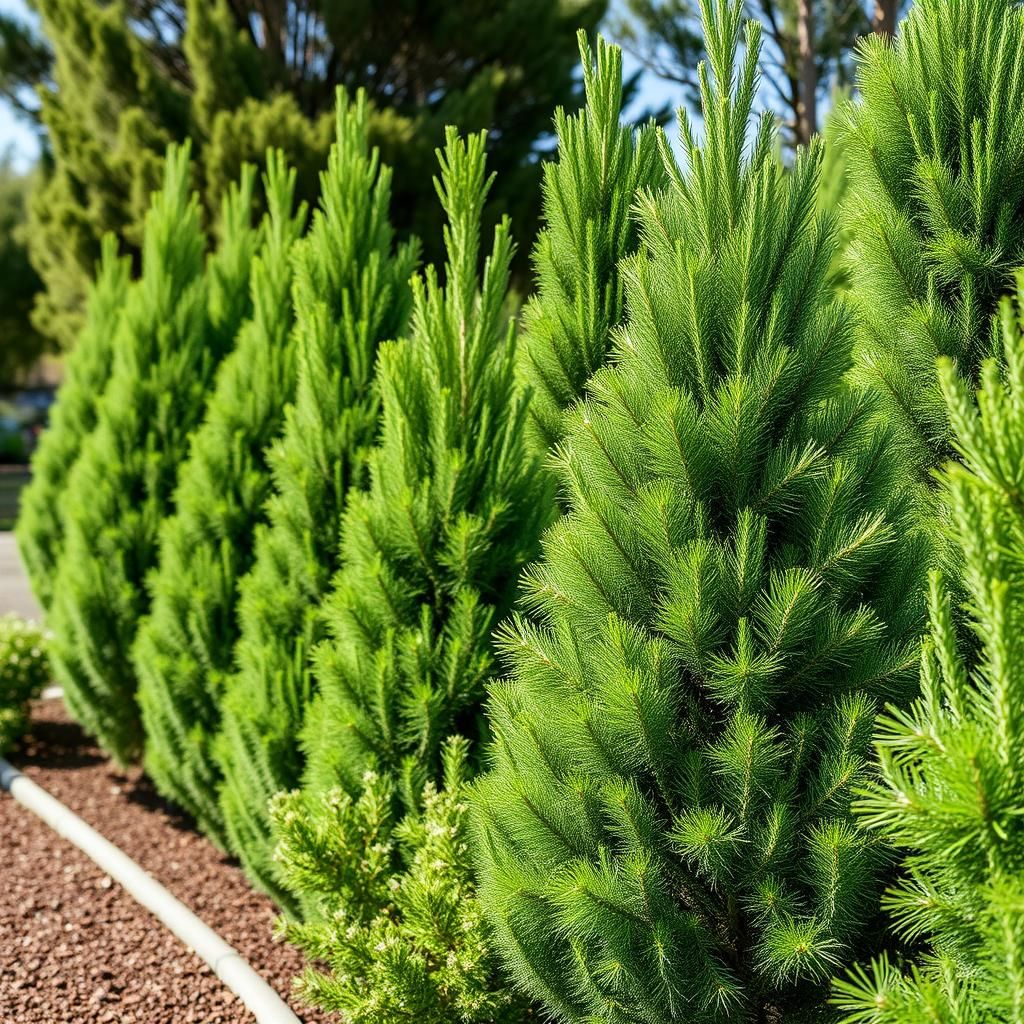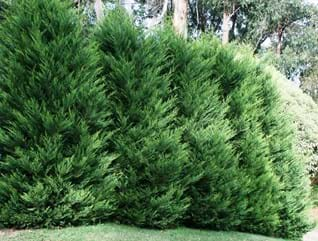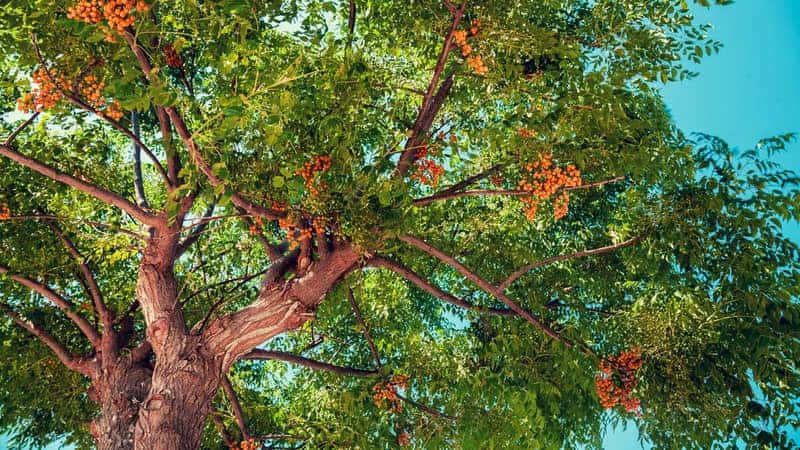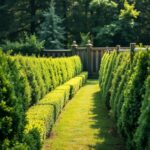Fast Growing Conifers Australia: The Best Options for Quick Privacy and Fast Growth

When it comes to landscaping in Australia, fast-growing conifers are an excellent choice for those seeking quick privacy and a touch of greenery. These evergreen trees not only provide instant visual barriers but also enhance the aesthetic appeal of any space. With a range of species available, it's essential to choose the right conifers that thrive in various Australian climates. In this article, we will explore some of the best options for fast-growing conifers in Australia, discussing their characteristics, growth rates, and ideal planting conditions. Discover how these trees can transform your outdoor environment quickly and effectively.
Fast Growing Conifers in Australia: An Overview
Fast growing conifers in Australia are becoming increasingly popular for both commercial and residential landscaping. These tree species are favored for their rapid growth rates, adaptability to various soil conditions, and resilience to Australia's diverse climate. Among them, the White Cypress Pine, Radiata Pine, and Australian Cypress stand out for their ability to thrive and provide immediate aesthetic value. Not only do they enhance the landscape, but they also offer environmental benefits, such as carbon sequestration and habitat for wildlife. With their varied uses in timber production, ornamental landscaping, and erosion control, fast growing conifers play a significant role in sustainable practices in Australia.
Top Fast Growing Conifer Species
Among the top fast growing conifer species in Australia, the Radiata Pine is widely recognized for its exceptional growth rate, reaching up to 30 meters in height in just a few years. This species is not only valued for its timber, which is versatile and easy to work with, but it also adapts well to different soil types, making it suitable for various regions across Australia. Other notable species include the Blue Gum and New Zealand Pine, both known for their rapid growth and utility in forestry.
Environmental Benefits of Conifers
Fast growing conifers provide important environmental benefits in Australia. They aid in reducing soil erosion due to their extensive root systems, which stabilize the ground. Additionally, these trees contribute to carbon sequestration, effectively capturing and storing carbon dioxide from the atmosphere. This helps combat climate change by lowering greenhouse gas levels. Moreover, coniferous forests support a rich biodiversity, offering habitats for various wildlife species native to Australia.
Commercial Uses of Fast Growing Conifers
The commercial demand for fast growing conifers has surged, primarily due to their timber. Species like the Radiata Pine are utilized in construction, furniture manufacturing, and paper production. Their quick growth allows for more frequent harvesting cycles, making them an economically viable option for forestry operations. As sustainable practices gain momentum, many companies are investing in the cultivation of these trees to ensure a renewable supply of high-quality wood products.
Cultivation Practices
Effective cultivation practices are essential for maximizing the growth potential of fast growing conifers. Proper site selection, including soil testing and ensuring adequate drainage, is crucial. Additionally, fertilization and watering techniques can significantly influence growth rates. Regular maintenance tasks, such as pruning and pest management, help maintain tree health and promote faster growth. Implementing these practices ensures that conifer plantations can thrive and yield the desired results in both aesthetic and commercial aspects.
Challenges Facing Fast Growing Conifers
Despite their advantages, fast growing conifers face several challenges in Australia, including pest and disease pressures that can hinder growth and productivity. Species such as the Radiata Pine are particularly vulnerable to pests like the pine beetle. Additionally, changing climate conditions pose a threat, as some areas may become unsuitable for growing certain conifer species. Addressing these challenges through integrated pest management and climate-adaptive strategies is vital for ensuring the long-term viability of conifer plantations.
| Species | Average Growth Rate | Uses |
|---|---|---|
| Radiata Pine | Up to 1 meter per year | Construction, Furniture, Paper |
| White Cypress Pine | 0.5-1 meter per year | Indoor/Outdoor Wood Products |
| Australian Cypress | 0.5-1 meter per year | Landscaping, Erosion Control |
What is the fastest growing conifer in Australia?

The fastest growing conifer in Australia is the Loblolly Pine (Pinus taeda). This species is known for its remarkable growth rate, thriving in various conditions across the continent. Under optimal circumstances, Loblolly Pine can grow up to 3 to 5 feet per year, making it a preferred choice for timber production and reforestation projects.
Characteristics of Loblolly Pine
Loblolly Pine is characterized by its tall, straight trunk and thick foliage. It’s a medium to large conifer that can reach heights of over 100 feet. The tree has a pyramidal shape when young, which becomes more irregular as it matures.
- Height: Can exceed 100 feet.
- Diameter: Mature trees can have a diameter of more than 2 feet.
- Needles: Bundles of 3, which can be around 6 to 9 inches long.
Growth Conditions
Loblolly Pine favors well-drained soils and can grow in a variety of conditions, including wetlands. It is most commonly found in the southeastern parts of Australia but can adapt to other regions as well. The growth rate is significantly enhanced when the tree receives adequate sunlight and moisture.
- Soil Type: Prefers sandy or clay loam soils.
- Climate: Thrives in warm, humid climates.
- Watering: Requires moderate to high moisture availability.
Uses of Loblolly Pine
Due to its rapid growth and high timber quality, Loblolly Pine is extensively used in commercial forestry. It is a valuable source of lumber, plywood, and paper. The wood is known for its durability and workability, making it suitable for a wide range of applications.
- Timber Production: High demand for construction and furniture.
- Pulpwood: Used in the paper industry.
- Ornamental Uses: Popular in landscaping due to its aesthetic appeal.
Environmental Impact
The introduction of Loblolly Pine in certain areas has raised concerns regarding its impact on local ecosystems. While it can provide benefits like erosion control, it may also outcompete native species. Thus, careful management is vital to ensure ecological balance.
- Biodiversity: Can reduce the diversity of native flora.
- Soil Health: May alter soil composition and quality.
- Carbon Sequestration: Contributes positively by absorbing CO2.
Propagation and Cultivation
Loblolly Pine can be propagated through seeds or cuttings, with seeds being the more common method. The seeds can be sown directly in the ground or started in a nursery and transplanted. Successful cultivation requires suitable site preparation and ongoing care during establishment.
See also:
- Seed Collection: Harvested in late summer to early fall.
- Site Preparation: Clearing weeds and debris to ensure seedling success.
- Maintenance: Regularly watering and monitoring for pests.
What is the quickest growing conifer tree?
:max_bytes(150000):strip_icc()/row-of-cypress-trees-2004161874-a4374f6a6a62471bada0939816314c49.jpg)
The quickest growing conifer tree is the Lodgepole Pine (Pinus contorta). This tree is known for its rapid growth rate, particularly in ideal conditions, where it can reach heights of up to 40 to 60 feet within just a few years. The Lodgepole Pine is primarily found in North America and is highly adaptable to different soil types, making it a popular choice for reforestation and landscape applications.
Characteristics of Lodgepole Pine
The Lodgepole Pine tree has several distinctive characteristics that contribute to its quick growth and utility in various environments:
- Needles: The tree features long, slender needles that grow in pairs, providing excellent photosynthesis capability.
- Cones: Its small, cylindrical cones open to release seeds that can germinate quickly after wildfires, aiding in regeneration.
- Bark: The bark is thin and scaly, allowing the tree to adapt quickly to fire-prone environments.
Growth Rate Comparison
When comparing the growth rates of various conifer trees, the Lodgepole Pine stands out due to its impressive statistics:
- Annual Growth: Under optimal conditions, Lodgepole Pines can grow 1 to 2 feet per year.
- Height Achievement: Within 20 years, a Lodgepole Pine can reach heights exceeding 30 feet.
- Growth Patterns: The tree exhibits a straight growth pattern, making it a popular choice for timber production.
Suitable Growing Conditions
Lodgepole Pines thrive in a variety of growing conditions, which enhances their appeal:
- Soil Type: They do well in sandy or loamy soils but can also adapt to poor, dry conditions.
- Climate: These trees prefer cooler climates but can tolerate a range of temperatures.
- Sunlight: Lodgepole Pines require full sunlight for optimal growth, thriving in open areas.
Ecological Importance
The Lodgepole Pine plays a crucial role in its ecosystem, contributing to biodiversity and habitat:
- Habitat: It provides shelter and food for various wildlife, including birds and small mammals.
- Soil Erosion: The extensive root systems help prevent soil erosion, particularly in mountainous regions.
- Fire Adaptation: Its ability to regenerate quickly post-wildfire supports forest health and biodiversity.
Uses of Lodgepole Pine
The Lodgepole Pine has numerous applications, benefiting both ecological and economic sectors:
- Timber: It is highly valued in the lumber industry for its strength and versatility.
- Ornamental Use: Lodgepole Pines are often used in landscaping due to their aesthetic appeal.
- Reforestation: The rapid growth and adaptability make it a preferred species for reforestation projects.
What is the fastest growing Australian tree?

The fastest growing Australian tree is the Tasmanian Blue Gum (Eucalyptus globulus). This native tree is known for its remarkable growth rate, often reaching heights of up to 70 meters (230 feet) in ideal conditions. The Tasmanian Blue Gum is not only valued for its timber but also for its ecological benefits, including its ability to sequester carbon dioxide effectively. Under optimal conditions, it can grow more than 1 meter (3.3 feet) per year, making it an excellent choice for reforestation and providing shade quickly.
Growth Characteristics
The growth characteristics of the Tasmanian Blue Gum make it a standout species among Australian trees. These characteristics include:
- Rapid height increase: The tree can grow over 1 meter per year.
- Strong root system: This helps it to stabilize in various soil types.
- Adaptability to climates: It thrives in different Australian environments.
Ecological Importance
The ecological importance of the Tasmanian Blue Gum extends beyond its rapid growth. Its role includes:
- Carbon sequestration: It absorbs large amounts of CO2 from the atmosphere.
- Habitat provision: Offers shelter and food for various wildlife species.
- Soil improvement: Enhances soil quality through leaf litter decomposition.
Uses in Forestry
In forestry, the Tasmanian Blue Gum has several significant applications due to its fast growth rate. These include:
- Timber production: Produces high-quality timber for construction and paper.
- Reforestation efforts: Important in restoring degraded lands.
- Commercial plantations: Widely cultivated for pulpwood and bioenergy.
Challenges and Considerations
Despite its benefits, growing the Tasmanian Blue Gum comes with its own challenges. These include:
- Invasive potential: Can outcompete native species if not managed properly.
- Pest susceptibility: Vulnerable to specific pests and diseases.
- Water usage: Requires substantial amounts of water, which can affect local ecosystems.
Growing Conditions
The Tasmanian Blue Gum thrives under specific growing conditions which are essential for its rapid development. These conditions include:
See also:
- Well-drained soils: Prefers sandy or loamy soils that drain well.
- Full sunlight: Requires plenty of sunlight for optimal growth.
- Moderate rainfall: Thrives in areas with consistent rainfall, ideally between 800 to 1,200 mm annually.
What is the most cold hardy conifers?
:max_bytes(150000):strip_icc()/SPR-twelve-species-of-fir-trees-3269663-2dbd42ed35204978a7417f9bf909bf0a.png)
The most cold-hardy conifers are those species that can withstand extreme temperatures and harsh winter conditions. These conifers typically belong to families that have evolved to thrive in subarctic and arctic climates. Some of the most prominent cold-hardy conifers include:
1. Norway Spruce (Picea abies): This species is native to Europe and is well-known for its cold tolerance. It can survive temperatures as low as -40°F (-40°C).
2. Black Spruce (Picea mariana): Commonly found in northern North America, black spruce is highly resilient to cold and thrives in Canadian boreal forests.
3. White Spruce (Picea glauca): This species is native to Canada and parts of the northern United States, known for its adaptability to cold temperatures.
4. Eastern Hemlock (Tsuga canadensis): Found in northeastern North America, eastern hemlock can handle cold temperatures and provides important habitat in forest ecosystems.
5. Balsam Fir (Abies balsamea): Another cold-hardy conifer, balsam fir is common in northern forests and is well suited for harsh winters.
Characteristics of Cold-Hardy Conifers
Cold-hardy conifers exhibit certain characteristics that enable them to thrive in extreme cold conditions. These include:
- Needle Structure: Their leaves are needle-like, which reduces water loss and protects them from cold.
- Root System: They often have deep and extensive root systems to access water and nutrients in frozen soil.
- Growth Habit: Many cold-hardy conifers have a conical growth shape that sheds snow easily, preventing breakage.
Habitat and Distribution
Cold-hardy conifers are found in regions characterized by severe winters and short growing seasons. Their natural habitats include:
- Boreal Forests: These forests span across Canada, Alaska, and parts of northern Europe.
- Mountain Regions: Many species thrive at high elevations where temperatures remain low year-round.
- Coastal Areas: Some cold-hardy conifers are also found in coastal regions that experience cold, harsh winters.
Ecological Importance
Cold-hardy conifers play a crucial role in their ecosystems by providing various ecological benefits:
- Wildlife Habitat: These trees serve as critical habitat and food sources for numerous animal species.
- Soil Stabilization: Their root systems help prevent soil erosion in harsh environments.
- Carbon Sequestration: Cold-hardy conifers absorb carbon dioxide, aiding in climate regulation.
Cultivation and Uses
Cold-hardy conifers are not only important in nature but are also valued for cultivation and uses in human environments:
- Lumber Production: Many species are harvested for their strong and durable wood.
- Landscaping: They are often used in landscaping for privacy and windbreaks.
- Christmas Trees: Several cold-hardy species are popular choices for Christmas tree growers.
Climate Change Adaptations
As climates change, cold-hardy conifers show remarkable adaptations to survive increasingly variable conditions:
- Phenological Changes: Some trees adjust their growing cycles in response to fluctuating temperatures.
- Genetic Diversity: Diverse populations can better withstand diseases and environmental changes.
- Migration Potential: Many species may shift their ranges northward as temperatures rise, seeking cooler environments.
Questions from Our Readers
What are the benefits of fast-growing conifers in Australia?
Fast-growing conifers in Australia offer numerous benefits, including rapid carbon sequestration, which helps mitigate climate change. They also provide timber that can be harvested sooner than slower-growing species, making them economically advantageous. Additionally, these trees can help improve biodiversity by providing habitat for various wildlife.
Which species of fast-growing conifers are suitable for Australian climates?
Some suitable species of fast-growing conifers for Australian climates include Radiata Pine, Loblolly Pine, and Cypress varieties. These species are adaptable to different soil types and have been found to thrive in particular regions within Australia, making them popular choices for forestry and landscaping.
See also:
How do fast-growing conifers affect the local ecosystem?
Fast-growing conifers can have a significant impact on the local ecosystem by providing shelter and food for native wildlife. However, there are concerns that they may compete with indigenous flora, potentially leading to biodiversity loss. It is important to monitor their growth and manage their plantation to maintain ecological balance.
What is the best time to plant fast-growing conifers in Australia?
The best time to plant fast-growing conifers in Australia is during the spring or autumn months when temperatures are moderate. This timing allows for optimal root establishment and reduces the risk of stress from extreme weather conditions, leading to healthier and faster-growing trees.

If you want to read more articles like Fast Growing Conifers Australia: The Best Options for Quick Privacy and Fast Growth, we recommend you check out our Hedges category.
Leave a Reply
Related Articles